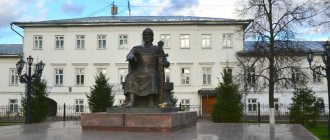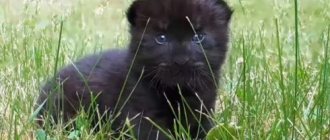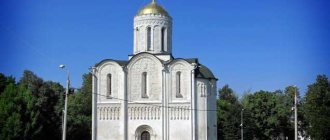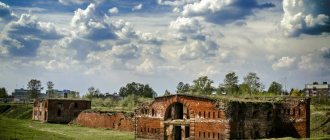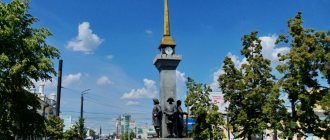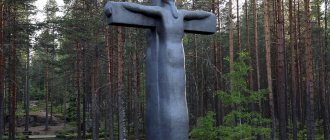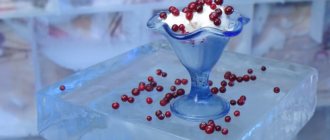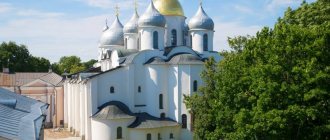| First day Second day Museums of Kostroma Excursions Stories, routes and tips from tourists with photos Where to stay in Kostroma Excursions from Kostroma for 2 days |
Kostroma is an ancient city in which Russian myths and fairy tales are intertwined with the history of Rus'. Kostroma was founded by Yuri Dolgoruky, Mikhail Romanov was elected to the throne here, and Susanin led enemy soldiers into the Kostroma swamps. The hometown of the Snow Maiden and the cradle of the Romanov dynasty enchants with its ancient architecture and picturesque Volga landscapes. It is interesting to spend time in the city for both adults and children of different ages.
Kostroma for 2 days from Moscow and other cities is a popular tour option. 2 days in the city is enough to see all the main attractions. A 2-day Kostroma itinerary can include a boat trip along the Volga and trips around the city’s outskirts. The main thing is to plan your sightseeing visits in advance and identify interesting objects for yourself.
Monument to Yuri Dolgoruky Photo: © Eduard Skvortsov
First day
Tourists begin their acquaintance with Kostroma from the historical center. The heart of the city is considered to be Susaninskaya Square , which has the shape of a fan, but the townspeople call it “Frying Pan”. 9 main city streets diverge from the square in different directions. The architectural ensemble of Susaninskaya Square is recognized as one of the most beautiful among the cities of the Golden Ring. Located on the high bank of the Volga, the square is surrounded by buildings from the late 18th-19th centuries. These are historical buildings: fire tower , guardhouse , Borschov's house , shopping arcades with the Church of the Savior in Rows .
Details: Susaninskaya Square
Fire tower on Susanin Square Photo: © Sergey Vasilets
The “handle” of the fan is Molochnaya Gora street, going down to the Volga. You can continue your acquaintance with Kostroma on the embankment, walking along 1st May Street to Central Park . Now, the main attraction of the park is the monument to Lenin on a pedestal intended for the monument “300 years of the Romanov royal dynasty.” Previously, there was a local Kremlin in the Central Park of Kostroma, but only part of the eastern rampart has survived to this day. Currently, restoration work is underway in the park of the Assumption Cathedral, destroyed during Soviet times.
From the park, return back to Susaninskaya Square - to diversify the route, follow Sovetskaya Street through the square of the same name. From the central square, follow Mira Avenue. Here are merchant estates and other notable architectural buildings of the 19th century: the Romanov Museum , the Ostrovsky Drama Theater , the building of the Noble Assembly , the Durygin estate .
Kostroma Drama Theater Photo: © Svet-lanka
Epiphany-Anastasia Monastery
The second part of the route through the sights of Kostroma is dedicated to the religious heritage of the city. the Epiphany-Anastasia Monastery located in the center of the city . The holy monastery was founded in the 15th century as a monastery for men, but later converted into a women's monastery. The monastery houses a shrine of the Romanov dynasty - the Feodorovskaya Icon of the Mother of God, considered miraculous.
Details: Epiphany-Anastasia Monastery
Epiphany-Anastasia Monastery Photo: © Margarita Kushnirenko
Ipatiev Monastery
Any list of Kostroma attractions for 2 days will include the main holy monastery of the city. The monastery was founded back in the days of the ancient Russian principalities. It was here that the Zemsky Sobor met in 1613 - on March 13, young Mikhail Romanov, who lived within the walls of the Ipatiev Monastery with his mother, was elected Russian Tsar. On March 14, he was crowned king in the Trinity Cathedral , located on the territory of the monastery.
Among other notable buildings of the Ipatiev Monastery: the walls and towers of the Old and New Towns (XVI-XVII centuries), the governor's building (XVI century), the chambers of the Romanov boyars (XVI century), the belfry (XVII century).
Details: Holy Trinity Ipatiev Monastery
Ipatiev Monastery Photo: © Chiffa7
Museum of Wooden Architecture "Kostromskaya Sloboda"
The Museum of Wooden Architecture , founded in Soviet times, is located near the walls of the Ipatiev Monastery. In the picturesque area where the Kostroma River meets the Volga, a Russian village of past centuries is reproduced. The museum exhibits were brought from settlements in the Kostroma region. These are ancient wooden churches, peasant huts, and commercial buildings. Inside the huts there are exhibitions introducing peasant life. You can visit the open-air museum at any time of the year.
More details: Museum of Wooden Architecture "Kostromskaya Sloboda"
Museum of Wooden Architecture Photo: © Eduard Skvortsov
The route of the first day in Kostroma is quite eventful. You can get around the historical center of the city in a couple of hours, but it is worth allocating more time to visit the Ipatiev Monastery and the Museum of Wooden Architecture - at least 2-3 hours in total.
Detailed route: What to see in Kostroma in 1 day
Architectural sights of Kostroma
Architectural and urban planning monuments, interesting buildings and structures.
Ostrovsky's gazebo
One of the symbols of Kostroma, located on the Volga embankment. The gazebo was erected in 1956 on a high embankment remaining from the earthen rampart of the Kostroma Kremlin. The architectural style is reminiscent of garden gazebos in ancient Russian estates - an elegant round roof is supported by seven columns. The gazebo offers a wonderful view of the river landscape. The luxurious gazebo was used during the filming of the film “Cruel Romance.”
Former guardhouse building
Built in the 19th century in the Empire style. Its elegant exterior is one of the decorations of Susaninskaya Square. The architect Fursov paid special attention to the details - columns, molded cornices of the portico and cornice, images of lion masks and Medusa* Gorgon. Currently, the building houses a military history hall, where weapons, award badges and orders, military documents, photographs, and uniforms are displayed.
Borschov's House
An architectural monument of the early 19th century. It belonged to Lieutenant General Borshchov, but the mansion received its luxurious appearance under the merchant Pervushin. It was he who rebuilt the house in the classicist style. The luxurious exterior of the mansion forms a single architectural ensemble with other buildings on Susaninskaya Square. The main façade of the building, facing the square, is decorated with Corinthian columns and a large pediment.
Office Building
The public building in classicism and empire style was erected at the beginning of the 19th century. It was rebuilt several times, the last addition was already in Soviet times, when the extension to the building was extended. The façade of the building is especially beautiful. The main entrance is decorated with two pairs of columns mounted on pedestals. Above the entrance there is a large window of the original type with a fan-shaped glazing. The building now houses the city administration.
Obelisk "Moscow Outpost"
Built on the Volga embankment, at the point of entry into the city for guests arriving by river. Two quadrangular obelisks are topped with double-headed gilded eagles and balls. They are adjacent to small walls with arched niches. The obelisks are 9 meters high. The outpost with obelisks was designed by the architect Fursov. The front view of the outpost was ready in 1823 for the arrival of Emperor Alexander I.
Shopping arcades
The construction of the complex of merchant shops began in 1775. Construction was finally completed in the 19th century, when the wooden buildings were replaced with stone ones. The basis of the complex was the Gostiny Dvor, consisting of 86 shops. The largest structure was the Great Flour Rows, whose building corners were rounded to make it easier for passing carts to turn. Tobacco, Meat and Kvass rows were also erected.
×
Second day
2 days in Kostroma is an opportunity not only to get acquainted with historical sights, but also to immerse yourself in the fabulous atmosphere of the city. Tourist sites associated with myths and Russian fairy tales are of interest not only to children, but also to adult travelers. Interactive activities are provided for tourists of different ages.
Berendeyevka Park Photo: © Eduard Skvortsov
The Snow Maiden's Tower
The residence of the granddaughter of Father Frost is located in Kostroma. The Snow Maiden's Tower is located at the end of an ancient street with wooden houses. The museum welcomes guests all year round - they are greeted by Snegurochka, Cat Bayun and Brownies. Visitors are treated to a traditional Russian loaf of bread and invited to the tower. In the house, guests will see a puppet show, communicate with Santa Claus through a magic mirror and view an exhibition with Christmas trees made of unusual materials.
The main attraction of the Snow Maiden's Tower is the Ice Room. This is a hall lined with real ice. The room is maintained at a constant temperature of -14 degrees. Before the visit, guests are given felt boots and zipuns. Inside the room, all objects are made of ice: dishes, furniture and other objects. Visitors are treated to drinks from ice-cold glasses: children are served fruit drink with melt water, and adults are served mead.
The Snow Maiden's Tower Photo: © mva011076
In addition to the museum tower, on the territory of the interactive exhibition center there are: a restaurant of authentic Russian cuisine, a playground with wooden elements, a souvenir shop with designer gifts, and signpost stones like in Russian fairy tales. The Snow Maiden's Tower welcomes guests every day; visiting the museum is only possible with a guided tour. Cost of the excursion: 250 rubles. for adults and 175 rub. for children. A visit to the Ice Room is paid separately: 320 rubles. for adults and 160 rub. for children.
Details: Interactive exhibition
The Snow Maiden is a symbol of Kostroma Photo: © Svet-lanka
Berendeyevka Park
The 90-hectare pine-birch park is located in the northern part of Kostroma, a 10-minute drive from the city center. In Soviet times, the place was legendary - the famous fairy tale film “The Snow Maiden” was filmed here. Then an amusement park, a hippodrome and VDNKh were built here, but over time, the recreation area fell into disrepair. Only the hippodrome remains in operation to this day. In 2011, with the opening of the park hotel, the area was improved and turned into a leisure center in nature.
now includes: a hotel complex with houses stylized as the same buildings from the film “The Snow Maiden”; 3 ponds with the opportunity to swim or rent a boat or catamaran; sports grounds; wakeboarding center; restaurant "Berendeyevka", operating since 1973.
The Terem Berendey Museum is of particular tourist interest . It is dedicated to the history and traditions of the fabulous people of the Berendeys, who, according to legend, lived on the territory of the Kostroma region. The exhibition halls display wooden sculptures depicting Slavic deities, as well as objects from the peasant life of Ancient Rus'. Guests are offered not only a tour of the exhibition halls, but also lunch in a stylized cafe, as well as a photo session in Russian folk costumes. Travelers with children can also visit the nearby Kostroma Zoo.
In detail: Berendeyevka Park and the Terem Berendey Museum
Berendeyevka Park Photo: © Eduard Skvortsov
River walk
Having explored Kostroma on your own in 2 days, it’s worth looking at the city from the water. During the summer navigation period (from May to October), the city offers boat trips along the Volga. There are several options for river trips.
The most budget option is regular flights to the settlements of Borshchi and Sady. The journey in both directions takes about 3 hours. In summer, flights operate twice a day - morning and afternoon, 5 times a week. In the autumn months - only on weekends. From Friday to Sunday, the port offers short tourist excursions along the Volga. The duration of the trip is 30 minutes. The schedule includes both daytime and evening flights. The tourist boat follows to the bridge connecting Ipatievskaya Sloboda with the city center. Along the way, tourists will see Ostrovsky's gazebo near the city embankment, a monument to Lenin, and the Ipatiev Monastery.
It is worth keeping in mind that there is no main River Station in Kostroma. Ships depart from different piers. The largest is landing stage No. 4, but tourist ships mainly depart from berth No. 2, located at the intersection of Pervo Maya, Tchaikovsky and Lesnaya streets.
Old pier in Kostroma Photo: © Eduard Skvortsov
Light guide to Kostroma. What to see in the city in 1-2 days?
We were dissuaded from going to Kostroma for a long time. “There’s nothing to do there, it’s sad, the roads are bad” - that was the verdict of the friends.
But we went anyway and were pleased. This is not the first time I have been convinced that the impression of cities and countries is very subjective. You can’t rely only on someone else’s opinion, you must make up your own. In my mini-guide I will show Kostroma as I saw it - where they lived, what they saw, what cafes they went to and what they brought as souvenirs. Plus, I’ll give you ideas if you have more time for Kostroma.
We arrived in Kostroma for literally three days during the March holiday weekend. We chose housing closer to the center so that the main attractions were within walking distance. We will return to the topic of hotels and apartments later, but for now the most interesting thing is the sights.
Day 1
First of all, we go to Susaninskaya Square . It is very easy to find on a city map; it looks like the base of a “fan”. Kostroma was built according to a master plan approved in 1784. The streets still converge radially towards the central square, which is jokingly called the “frying pan”.
If possible, it is better to approach Susaninskaya Square along Mira Avenue. There is a pedestrian Alley of Recognition . On both sides of the alley there are stands with old photographs and brief historical data, and underfoot there are memorial plaques with the names of respected residents of the city. Other names include Yuri Dolgoruky (the founder of the city), Boris Godunov, Ivan Susanin.
On the right side of Mira Avenue there will be the Kostroma Museum-Reserve. The building project was personally approved by Nicholas II and you definitely won’t pass by an example of Art Nouveau in the pseudo-Russian style. On the left side is the Ostrovsky 4* hotel, where one of the best restaurants in the city is located - Groza. A bomb chef cooks up delicious food here. If you are planning a romantic weekend in Kostroma, then I recommend this duet)).
Almost all photographs of the city show off the Fire Tower - the main decoration of Susaninskaya Square. If you don’t know that this is a tower in front of us, then the building could easily be mistaken for a rebuilt temple. The facade with a portico is very reminiscent of a church.
Pigeons always hang out near the Fire Tower, you can feed the birds and try to take picturesque photos with their wingspan)).
We cross the street and move towards the Volga. There will be old shopping arcades on both sides. One arched span = one merchant's shop. The rows still sell various food and souvenirs. I'll show you one of the shops. Either a museum or a souvenir shop. It looks very authentic, it’s like I went back a couple of centuries.
Be sure to check out the Cheese Exchange. I think that you already know that Kostroma is the cheese capital, which means you definitely need to bring cheese gifts from your trip.
Past the monument to Ivan Susanin along Molochnaya Gora Street we go down to the embankment and the Staraya Pristan restaurant. The film “Cruel Romance” was filmed here. It seems that the restaurant itself is not bad.
Pay attention to the main entrance from the Volga. Two obelisks were installed when Emperor Alexander I was expected to visit.
Next, I propose to go to the territory of the Kostroma Kremlin along Ostrovsky Street. Alas, the Kremlin has not survived to this day. It was located on the high left bank of the Volga, but the exact location is difficult to establish, since the walls were dismantled for several centuries and finally disappeared in 1934. Local historians are guided by earthen ramparts and remains of stone structures. On the site of the ancient Kremlin, a park was laid out with a huge figure of Lenin.
Now restoration work is underway on the territory of the Kremlin, which is undoubtedly encouraging. But do you know what surprised me? The restoration work is sponsored by philanthropist Viktor Ivanovich Tyryshkin. A private citizen and honorary citizen of the city. Does no one except him care about the restoration of the Kostroma Kremlin?
One of the iconic places of the existing park is Ostrovsky's gazebo. It stands right on the earthen rampart - an embankment left over from the Kremlin. On the Alley of Recognition, I photographed old photographs of the gazebo and made a collage. The appearance of the gazebo has changed slightly. The spans were openwork, now they look more minimalistic.
Do you see the church and buildings in the old photo behind the gazebo? This is where the restoration work is taking place. It was such a difficult, troubled time... history was so thoughtlessly destroyed. By the way, Ostrovsky never visited this gazebo; it was built after his death. The writer mentioned in his diary and letters another gazebo, a wooden one. It was demolished in 1932.
If you return to Susaninskaya Square through Tchaikovsky Street, do not miss the Museum of Cheese (house 17B). You will see a large cow in front of the building, so you won't miss it. We came to Kostroma with a child, so museums were excluded from the route. If interested, take a look. Reviews for the museum are not bad.
I like to get to know the city through sightseeing walking tours. I made a mistake with Kostroma; I didn’t worry in advance and didn’t book an excursion. And we came for the March holidays. Don't be like me. Look on the Internet what local travel agencies offer or here are my options:
A soulful walk around Kostroma is the most inexpensive excursion on Tripster (780 rubles per person).
Kostroma - first acquaintance - this excursion has the most reviews. And one more nuance - if you are traveling with a family or a large group, then this option for 1300 rubles will be the most profitable. You can join up to 6 people on the tour.
I will leave here an interactive map of Kostroma, on which I have marked all the attractions mentioned in the article.
If you come to Kostroma with children over 3 years old, then you can stop by to visit the Snow Maiden. This is another attraction of the city. I had mixed impressions of Terem, because we didn’t get there in the end.
Firstly, in Kostroma there are several points with the name “Snegurochka” and we first came to the Snegurochka Residence. It was closed (pre-holiday). We turned around on the navigator and went to the Snow Maiden's Tower (38 Lagernaya St.). It was completely unexpected to see a small wooden tower squeezed between panel houses. I wanted a fairy tale and space...
We arrived at the wrong time. We hoped that we could communicate with the Snow Maiden at any time. But no, everything is on schedule. It is better to book a tour in advance on the website. We didn't wait.
There is a restaurant called Metelitsa near the tower; it gets good reviews from travelers. But the restaurant was serving a banquet and again we didn’t wait)).
While we’re not far off topic, I’ll tell you where we ate deliciously, and then I’ll continue about the sights of Kostroma.
Dumpling house “Surfaced! Shoot"
The dumpling cafe was discovered quite by accident not far from our house (Sennaya St. 22/22). I liked the appearance of the place + there were practically no empty tables inside, which is a good sign. There are no waiters in the dumpling shop. You need to place an order at the cash register and then pick it up yourself.
The pricing policy is clear from the photo:
The interior is pleasant, I was surprised by the presentation of the salad (in a jar), and right from the hall through the glass wall you can see how our dumplings are molded by hand. A sort of show “Behind the Glass”
Cafe "Izbushka"
We wanted to arrange a gala dinner on March 8 at the Syrovar restaurant, but it didn’t work out that way. I called there, all the tables were occupied. “Thunderstorm” - similar. I went with my husband and daughter to Izbushka (Sovetskaya Square 4) and overall were satisfied.
During the day, the cafe functions as a fast food establishment (read: a canteen), and in the evening as a restaurant - with a menu and waiters. I want to say that the interior in the Izbushka is not at all canteen-like and there is even a small children’s corner with toys, where we placed our daughter. The menu is varied - a good selection of hot dishes, salads, desserts.
At the entrance to Izbushka there is a cafeteria with buns and desserts. This is where you should slow down and buy candied fruits as souvenirs. The photo shows orange slices. Incredibly delicious! There are also apple and pear ones.
I recommend both establishments!
Day 2
Perhaps the trip to the moose farm left the most vivid impressions of the entire trip to Kostroma. The mooses are so cool))).
You can get to the farm on your own by car or as part of an excursion. If you are driving on your own, check the location of the moose first on the website. Here is the official website of the Sumarokovsky reserve. This is where you need to look for current information. In winter, the animals are in a winter camp. There is a map in the “contacts” section. Plan your trip in the morning.
During our excursion the weather was absolutely disgusting. The rain fell without stopping for a minute. We had to abandon the car not far from the highway and continue on foot, we were afraid that we would get stuck.
Included in the ticket price (150 rubles). includes carrots for moose and this is the most important attraction on the farm)). Take cash with you; bank cards are not accepted at the farm.
We really enjoyed our stay at the moose farm, but there was still one sad moment. This is, after all, a nursery and the animals are bred here to be later transferred to other forestry enterprises. Why can you come and see moose at any time of the year? Why don’t they go into the forest, since there are no pens? Those wooden beams that you see in the photo are a fence for guests, not for animals.
In winter, moose stick to people because they are fed. They are far from stupid and love carrots. And in the summer, the babies are taken from the moose cows and raised separately. There are no moose calves nearby, but the instinct is there and there is milk too (you can buy it at the farm in the summer). Well, let's not talk about sad things. At the very least, human intervention makes it possible to increase the number of elk.
If you don’t know how to get to the moose farm without a car, look at the option with a tour from Tripster, and at the same time see the village of jewelers.
I propose to spend the second half of the day on the other side of the Kostroma River in the Ipatiev Monastery. To be honest, when approaching the monastery closer, you might think that this is the Kremlin, and not a monastery at all. In the 14-15 centuries, the monastery was an outpost on the northeastern border of the Russian State, and the first mention of the monastery was recorded in the chronicle of 1432!
We walked around the monastery on our own and jogged. I later regretted that we saved on the excursion and did not prepare in advance for the visit. You can book a pilgrimage excursion on the monastery website or consider the option of an individual excursion with a guide - Kostroma - the cradle of kings.
The Ipatiev Monastery is called the “cradle of the House of Romanov.” It was here that the family's three-hundred-year reign began.
“Under the Romanovs, the monastery as the “cradle of the dynasty” occupied a privileged position; the history of the Godunov family monastery was closely intertwined with the history of the reigning house of the Romanovs, who became generous patrons of the Ipatiev Monastery. Members of the royal family revered the Ipatiev Monastery as their family shrine. Upon ascending the throne, each of the kings considered it his duty to visit the monastery and make generous contributions.”
The monastery is active, but entrance to it is paid. One part (the Old Town) is open as a museum, but you cannot enter the New Town. This area is closed to prying eyes.
I recommend going to all the open churches and museum chambers; just walking around the territory will not be enough!
I will leave here a link to the official website of the monastery - ipatievsky-monastery.ru
*Opposite the entrance to the monastery there is a small souvenir market. This is where I bought souvenirs.
- Cheese (that would be stupid). I won’t recommend specific varieties, take it to your taste. The meeting point is the Cheese Exchange on Susaninskaya Square.
- Thursday salt . My personal recommendation is black salt with a slight rye flavor. We are so addicted to this salt that we found it on the shelf at Perekrestok and now we always buy it.
- Linen products . A souvenir for everyone, but know that Kostroma is famous for its linen manufactory. In 1866, the first spindles of the flax spinning mill began working.
When I was preparing for the trip, I looked for information not only about the city itself, but also about the surrounding area. I share information.
- Park Hotel "Volzhsky Surf". If you want a relaxing holiday with All inclusive in Kostroma style. The hotel is located in the forest, on the banks of the Poksha River, there is a swimming pool, a lot of activities for children, gazebos with a barbecue area, a cat house, a bathhouse and much more. From Kostroma it is only a 30-minute taxi ride (400 rubles). The reviews are excellent, take a closer look.
- Forest tower of Astashovo. For the sake of this tower, you can generally plan your entire trip to the Kostroma outback. This is not a remake, but a real tower, which is 100 years old. The house was restored and a mini-hotel was organized in it (9.7 points on Booking).
- River walks if your trip is planned for the summer. Don't forget about this opportunity))
- If you have time, then take a look at Kostromskaya Sloboda - a museum of wooden architecture. It is located right behind the Ipatiev Monastery.
Kostroma is a tourist city, you definitely won’t be left without housing. We booked an apartment on Booking. I liked the location and price, but I wouldn’t say that I was 100% satisfied with the apartment, so I won’t recommend it.
But in my notes I still have a selection of hotels that I painstakingly collected based on reviews on forums. Sharing:
Ya-Hotel 4* (9.5 points) - from 3,500 rubles per day for two. If this hotel is available for your dates, don't even think about it and book. It’s cozy, within walking distance from the center, breakfast is included in the price and in general the food at Ya-Hotel is delicious, including business lunches.
Moskovskaya Zastava 3* (9.2 points) - from 2500 rubles per day. The hotel's excellent location is right on the banks of the Volga and a five-minute walk from the shopping arcades. You can immediately book a room with breakfast or pay on the spot.
Park Hotel Berendeyevka 3* (8.2 points) - from 2000 rubles per night with breakfast. The hotel is located 4 km from the center of Kostroma. If you travel by car, then this is not a problem at all. In any other case, there is a taxi. The highlight of the park hotel is its rustic style with log huts and spaciousness on all 4 sides.
Inexpensive apartments and hostels are also available. You can easily stay for 500 rubles per person.
The most expensive option in Kostroma, which I found on Booking, is the Grand Hotel and SPA Aristocrat 4* - from 7,500 rubles per day. But this price includes three meals a day for two, and this is already interesting! The hotel is located closer to the Sumarokovskaya elk farm than to Kostroma, but suddenly you want something like that.
- By car . From Moscow to Kostroma 340 km, approximately 5 hours of travel. You take the M8 highway and forward through Pereslavl-Zalessky and Yaroslavl. By the way, the route is excellent for a short road trip. You can also include Rybinsk. We were traveling to Kostroma from Nizhny Novgorod through Ivanovo. In terms of distance and time - the same.
- On Lastochka (No. 716Ya) you can fly to Kostroma in four hours. Departure time from Yaroslavsky station is 15:10. Fast, but not very convenient for a weekend trip. For a weekend, it is better to consider the night train No. 002E or No. 148Ya. Early on Saturday morning you will be in Kostroma, spend the night in a hotel for one day and return back by night train No. 147Ya.
I won’t recommend the bus, because I don’t see the point in it. If you want to save money, it’s better to look for a ride on BlaBlaCar.
Oksana
Museums of Kostroma
What to see in 2 days in Kostroma if you have visited all the historical and architectural sites? The answer is museum exhibits that take you deeper into the city's history or entertain you with interactive elements. A 2-day route around the sights of Kostroma should include several museums, especially since most museums are private and very small. Inspection of the exhibitions and the interactive program will take no more than an hour.
Romanov Museum
The museum was built in pre-revolutionary times and was inaugurated by Emperor Nicholas II. It was founded specifically for the exhibition dedicated to the royal dynasty. The stone mansion in pseudo-Russian style displays a rich collection dedicated to the Romanovs, as well as works of art by Russian painters: Kustodiev, Shishkin, Aivazovsky. Separate exhibitions tell about the events of the Time of Troubles and the life of the boyars; paintings with portraits of nobles and townspeople are also exhibited here.
More details: Romanov Museum
Romanov Museum Photo: © Chiffa7
Museum of the History of Kostroma Region
Located in the former governor's estate of the 18th century, the museum introduces visitors to the history of the region from ancient times. Visitors will learn about the tribes that inhabited the Kostroma lands; about the role played by the city of Kostroma during the times of the Russian principalities; about the Time of Troubles, the Godunovs and the Romanovs.
Assembly of the Nobility
The exhibitions in the building of the Noble Assembly are dedicated to the life of nobles and the life of townspeople in different centuries. The main exhibition tells the story of the private and social life of the nobles: the collection includes household items, clothing, and historical documents. In other rooms, visitors will learn about the life of other classes in the provincial city. Not only individual objects are presented, but also entire interiors: for example, the office of a representative of the upper class and the room of a simple worker. In winter, a New Year's ball is held in the building of the Noble Assembly.
Details: Assembly of the Nobility
In the halls of the Assembly of the Nobility Photo: © Alexey Panin
Museum of Gypsy Culture and Life
This is the only museum in our country dedicated to the nomadic people. The museum exhibits gypsy outfits and musical instruments, paintings and graphic works. Guests will learn about the influence of Gypsy culture on the global music industry, the history of the people and the development of Gypsy theater.
More details: Museum of Gypsy Culture and Life
Of particular interest are small museums dedicated to folk crafts and local products of the Kostroma region. In the Museum of Flax and Birch Bark, visitors can not only watch the process of hand-made linen products, but also purchase products in the souvenir shop. In the cheese museum , after a tour of the exhibition and an introduction to the stages of cheese making, guests are offered a tasting of the best Kostroma cheeses. In the Museum of Jewelry Art, tourists will see the best examples of works by Kostroma craftsmen. At the Bread Museum, you can not only learn the history of bread making from ancient times, but also try baked goods from local bakers.
Museum of Flax and Birch Bark Photo: © Alexey Panin
“Terem Snegurochka” and “Terem Berendey” are not the only museums in Kostroma for a family visit. It is also worth visiting the Petrovskaya Toy Museum - children will learn about the production of clay whistles and will even be able to try their hand at this craft. In the “Wonder Forest” museum, children will be told about forest inhabitants – fabulous and very real. Most of the exhibits are made of wood, twigs and other “forest” materials. At master classes, little tourists will be able to make their own forest souvenir.
Detailed material: Museums of Kostroma
Museum “Wonder Forest” Photo: © Chiffa7
Attractions in the vicinity of Kostroma
Interesting places to go by car near the city.
Estate "Sledovo"
A noble estate 25 km from Kostroma, which has retained its atmosphere and flavor despite the passing centuries. It was built in the 18th century and belonged to the noble family of the Kartsevs. Currently, in the preserved park of the estate, rock gardens and picturesque flower beds have been laid out, thousands of shrubs and trees have been planted. In June, when hundreds of flowers begin to bloom, the estate hosts an annual Flower Ball.
Museum of Jewelry and Folk Applied Arts
Located 35 km from Kostroma, in the village of Krasnoe-on-Volga. The basis of the museum’s collection is the products of Krasnoselsk filigree masters. One of the permanent exhibitions displays ancient frames, including those from the 12th century. An interesting exhibition about the history of Kostroma jewelry art. The exposition of the Golden Fund presents exclusive jewelry, works of graduates of the local jewelry school.
Excursions
The sights of Kostroma that local guides recommend to see in 2 days often differ from the top lists. Kostroma guides show tourists unusual places in the city; They tell interesting facts that cannot be read in guidebooks. A guided tour of Kostroma can be either a sightseeing or a thematic one. Travelers with young children often choose “fairytale” programs. Schoolchildren will benefit from excursions with a historical twist. There are also special excursion programs for pilgrims.
Excursions around Kostroma on the project Experts.Tourister.Ru
Borschov's House Photo: © Igor Butyrskii
Stories, routes and tips from tourists with photos
You will find routes and tips from experienced travelers around Kostroma for 2 days in the reports of tourists. Travelers share tips on how to properly manage time in the city. In the reviews of tourists you will find practical advice on organizing leisure time in Kostroma, recommendations for restaurants and cafes. Tourists post realistic photographs of the places they visit and help create walking routes around the city.
- “To Kostroma for a dog show. Part 1: Holy Trinity Ipatiev Monastery” and “To Kostroma for a dog show. Part 2: Kostroma, except for the Holy Trinity Ipatiev Monastery" - reports from Sergei Kuznetsov.
- “Good tales of winter Kostroma” - report from Svetlana.
All tourist reviews about trips to Kostroma
Ostrovsky's gazebo Photo: © Eduard Skvortsov
Where to stay in Kostroma
Kostroma is one of the historical cities of the Golden Ring of Russia, and there is a lot of housing to accommodate tourists. You can book one of the central options, which is always convenient, and even more so here, because the bulk of the attractions are located in a compact area near Susaninskaya Square.
Or choose such interesting options as “Ostrovsky Pier” - a boutique hotel in the former building of the River Station, “Cruise”, similar to a ship sailing along the Volga, or fabulous little houses in the park hotel “Berendeyevka”, in the city park of the same name with ponds.
- Kostroma Hotels
- Hostels for Budget Travelers
- Flats and apartments
A useful benefit when booking accommodation on Booking.com is cashback: Cashback promotion on Tourist. RU
River bus Photo: © Eduard Skvortsov
Cities and villages
Excursion tours to Kostroma and the surrounding area usually include visits to the historical settlements of the region: Galich, Nerekhta and other cities. The area of the Kostroma region is only 60,200 sq. km. You can visit settlements of interest to tourists in 1 day. What is a must see in the vicinity of Kostroma? The most popular cities in the Kostroma region are below.
Nerekhta
The distance from Kostroma to Nerekhta is 40 km. The open-air museum city of Nerekhta is included in the list of cities of the “Small Golden Ring of Russia”. The city was founded at the beginning of the 13th century - at that time the ancient part of Nerekhta was located on the right bank of the river of the same name. In the 15th–16th centuries, the main specialization of the city was salt production, but after the burning of the city at the beginning of the 17th century, the trade was stopped. Most of the historical heritage of Nerekhta dates back to the 18th–19th centuries. The architectural ensemble is an excellent example of a Russian provincial city: merchant mansions and Gostinye Rows in the historical center, wooden huts closer to the outskirts.
The city's churches are of tourist interest: the Church of the Resurrection of the late 18th century in the Russian Rococo style; the Church of the Epiphany with a spectacular iconostasis, an exhibition of church objects and a viewing platform on the bell tower; Church of the Presentation of Our Lady of Vladimir at the end of the 17th century with ancient wall paintings. As a souvenir, it is worth purchasing linen Nerekhtchan dolls as a souvenir.
Shopping arcades and the Kazan bell tower in Nerekhta Photo: © Eduard Skvortsov
Galich
The ancient city of Galich is located 120 km from Kostroma, on the shores of Lake Galich . The city was founded in 1159. For some time, Galich was even the capital of an independent principality - Konstantin Yaroslavich, brother of Alexander Nevsky, ruled here. Before the Time of Troubles, Galich was an important outpost, but a punitive detachment of Poles burned the city. Also, the historical sights of Galich suffered from Soviet rule.
In the city, it is worth visiting the Transfiguration Cathedral , which is located on the territory of the former Galich Kremlin . Also interesting are the Transfiguration Church in the provincial baroque style, built in 1771, and the stone shopping arcades , preserved from the 19th century. On the outskirts of Galich is the main attraction of the city - the Assumption Paisiev Monastery , built in the 14th century. This is the oldest holy monastery in the region. On the shore of Lake Galich there is a complex of the Nikolaevsky Starotorzhsky Monastery - now the monastery is abandoned and is not being restored.
Galich in winter Photo: © Ena
Buoy
The city of Bui, located 100 km from Kostroma, was founded as an eastern fortress in 1536. The fortress in Buya was supposed to protect Russian lands from the attacks of the Kazan Tatars, but after twenty years it lost its significance, since Kazan was taken. From then to the present day, the city has remained small, without any important specialization. The list of cultural heritage sites of Russia includes 3 sights of Bui: the rampart , a remnant of the ancient fortifications of the 16th century; old fortification from the 15th century and the fortress moat . The main city attraction is the Church of St. Nicholas the Wonderworker , integrated into the ensemble of the railway station.
Station Square in Buya Photo: © Ena
Krasnoe-on-Volga
The jewelry capital of Russia is located 35 km from Kostroma. Since the 19th century, a small village on the banks of the Volga has been the center of the jewelry industry. The products of Krasnoselsky craftsmen were sold at all major fairs of the Russian Empire. Its characteristic feature was its focus on the poorer sections of the population. In Krasny-on-Volga, jewelry was made from copper and silver; crosses, roll earrings, brooches in the form of birds, twigs and bows were in particular demand. At the beginning of the 20th century, an Arts and Crafts Workshop was founded in the settlement, on the basis of which a unique technique “Krasnoselskaya filigree” was developed.
Now in the village, tourists can visit the Krasnoselsky Museum of Jewelry and Folk Applied Arts . Among the more than 3 thousand exhibits: ancient jewelry by local craftsmen, copper cult castings and objects produced by modern jewelers. The museum has an art salon where you can purchase jewelry from Krasnoselsky craftsmen.
Krasnoselsky Museum of Jewelry and Folk Applied Arts Photo: © Elena Solovyova
Chukhloma
Chukhloma, a city founded in 1381, is located 150 km from Kostroma. In the center of the city there are remains of earthen ramparts from a fortress built in the 15th century. In the 19th and early 20th centuries, the city became famous for its fairs. The Catherine Fair in Chukhloma was the largest in the entire district. Now tourists visit the Avraamiyevo-Gorodetsky Monastery , located 11 km from the city, and the fabulous-looking towers in the village of Astashevo, Chukhloma district. The tower, built at the end of the 19th century, looks like an illustration by Bilibin. According to legend, it was built for the hunting needs of the royal family. But how he got to the Chukhloma region is unknown.
